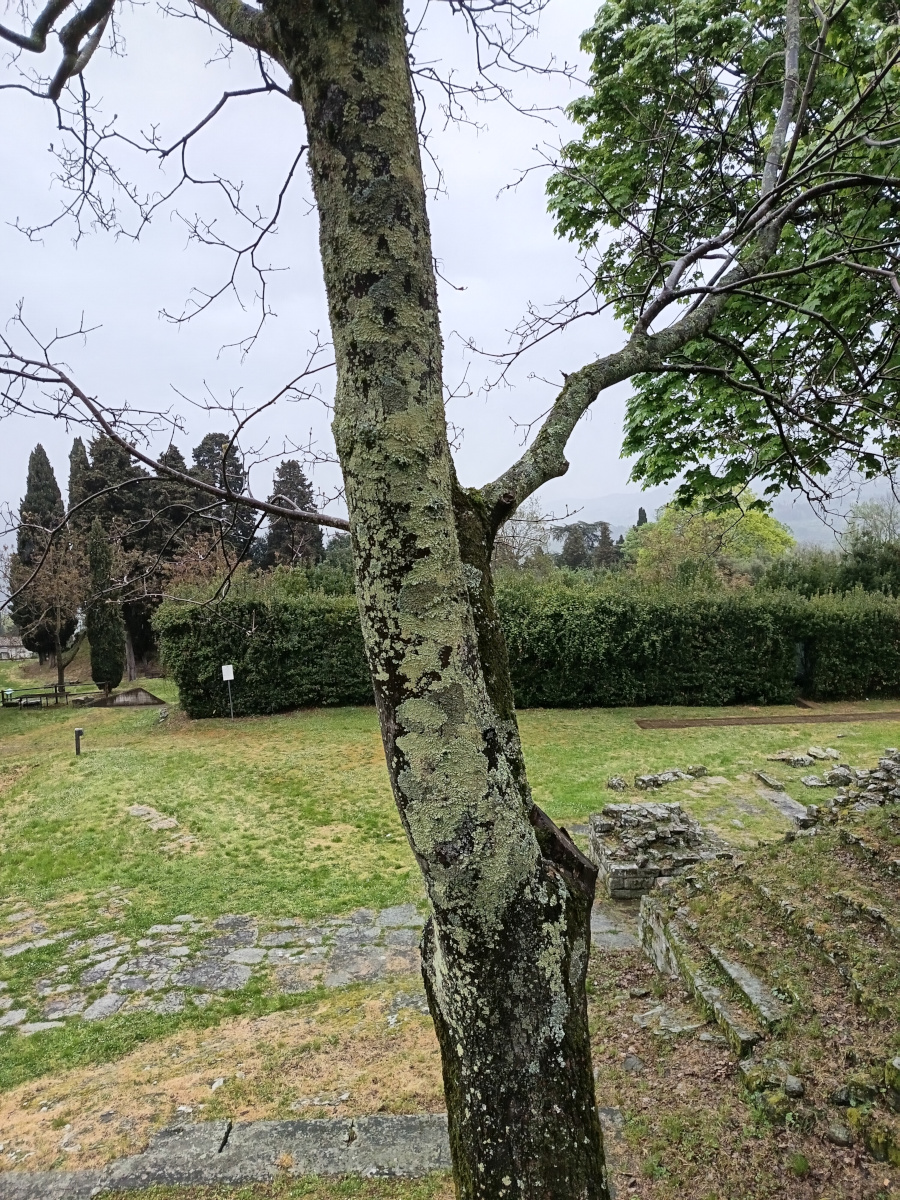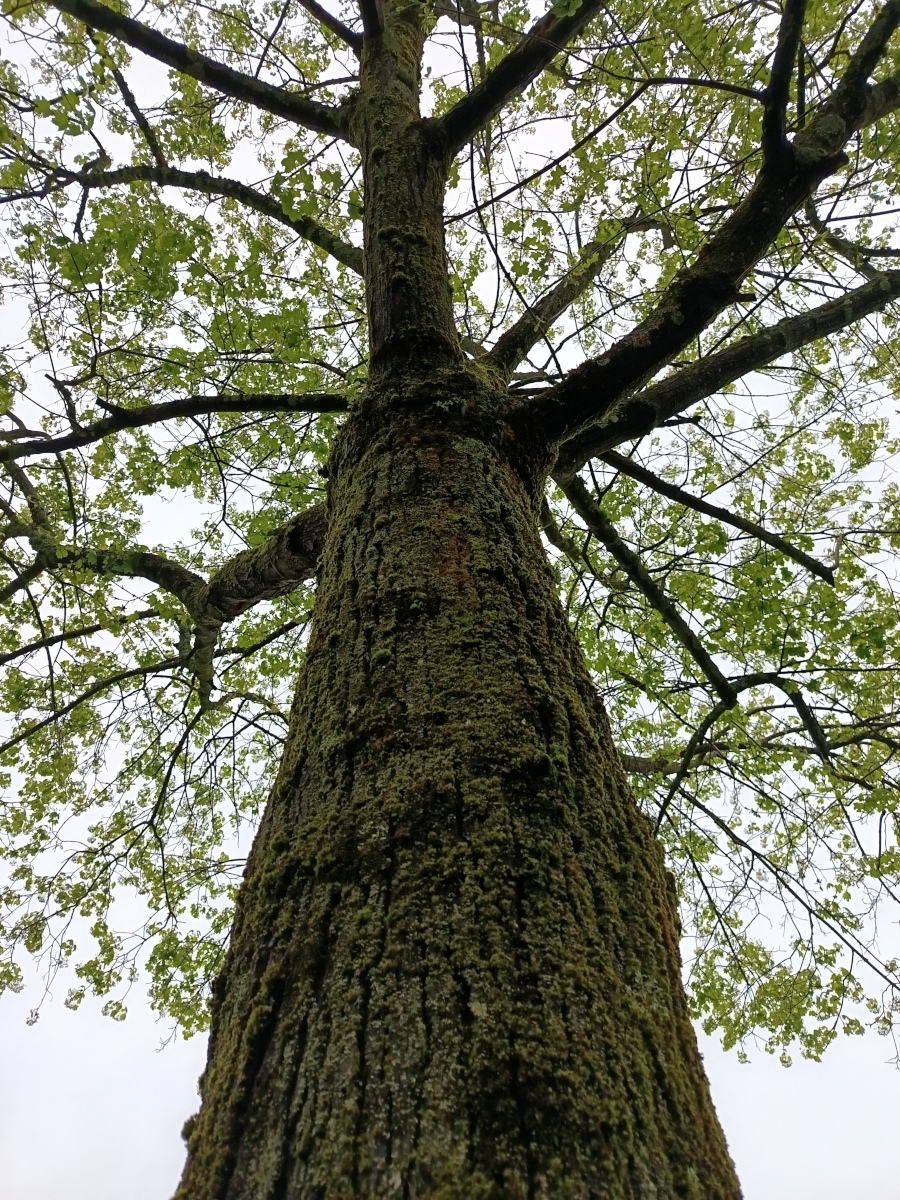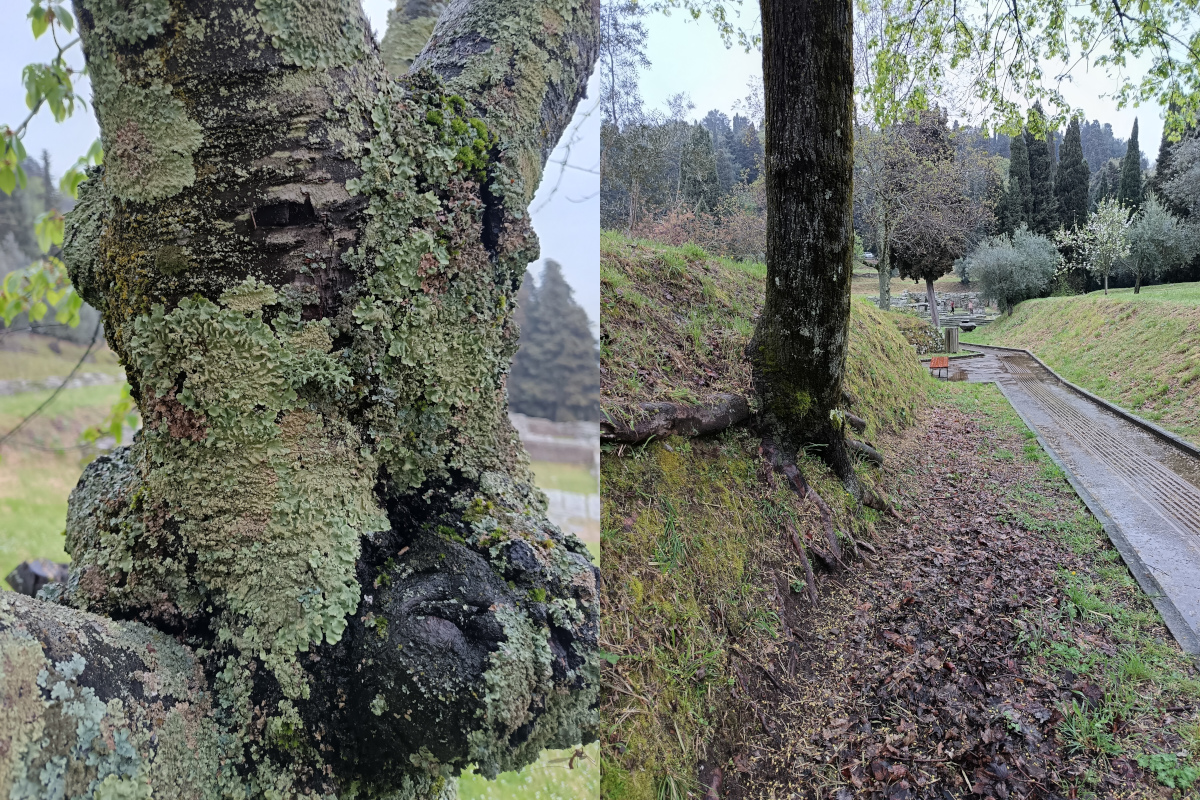- Along the Tree Trunk: A Vertical Landscape
- At the Base of the Tree: Where Moisture Matters
- At the Top of the Branches: Where Light Reigns
- Lichens and Animals: A Web of Life
Along the Tree Trunk: A Vertical Landscape

As you move up the trunk, lichen communities change in shape and colour. This happens because each part of the trunk has different characteristics: some areas are more exposed to rain, others to sunlight, and others are more sheltered or have bark that is more or less textured.
-
Learn more...
Epiphytic lichens grow on trees without damaging them. They reflect both the surrounding environment and the characteristics of the portion of tree they colonize. By looking closely, you can see how lichen communities change along the trunk, from the base to the topmost branches. Their distribution depends on several factors, such as the trunk's exposure and distance from other trees or rocks. Differences are also noticeable between individual trees, depending on their age and the degree of bark fissuring.
At the Base of the Tree: Where Moisture Matters

The lower part of the tree, close to the ground, is often colonized by crustose lichens that love humid environments. Here, the soil plays a key role: the more moisture there is, the more likely you are to find certain species.
-
Learn more...
The base of a tree trunk forms a unique microhabitat: it tends to be more humid, more shaded, and potentially richer in nutrients. It collects rainwater flowing down the trunk and benefits from moisture rising from the soil. The shade of the canopy and the proximity to the ground reduce sun exposure. Splashing during rain and occasional surface runoff can slightly enrich the bark with mineral nutrients. These specific conditions favour the growth of certain types of epiphytic lichens. Crustose lichens – closely attached to the bark – are the most common growth form here. You may also find foliose lichens, especially in shadier or more humid surroundings, but crustose species are often the first colonisers and dominate this niche.
At the Top of the Branches: Where Light Reigns

Looking up at the upper parts and branches of the trees, epiphytic lichens with fruticose or foliose growth forms dominate. These light-adapted species are often gray-green or yellow-orange, evidence of their successful adaptation to strong light, wind, and prolonged drought, conditions typical of exposed canopies in Mediterranean climates.
-
Learn more...
Looking up towards the upper parts of tree trunks and branches, we often encounter a community of epiphytic lichens that differs from the one found near the ground. These parts of the tree form a highly exposed microhabitat, especially in the Mediterranean climate, characterised by intense sunlight that can last for many hours a day. They are also subject to wind, which accelerates evaporation and dehydration. Although they become wet quickly from rain or dew, they dry out just as fast. The bark in these areas is generally poorer in nutrients compared to that near the ground, which benefits from runoff from the soil. The predominant growth forms in this part of the tree are fruticose and foliose, both adapted to sun. The fruticose form, for example, optimises light capture and moisture absorption from rain, fog, or dew when available. Foliose lichens are also well represented: they are often brightly coloured (yellow or orange) thanks to pigments that protect them from UV rays, or they may have robust structures, usually pale in colour (gray or white), to reflect sunlight.
Lichens and Animals: A Web of Life

Lichens are part of a complex ecological network: they provide shelter, food, and nesting material for many forest animals, including insects, birds, and small mammals.
-
Learn more...
Lichens are true builders of micro-worlds. Their thalli offer a home, shelter, and food to countless tiny creatures such as insects, mites, spiders, and even the microscopic and almost indestructible tardigrades. This makes them key contributors to the biodiversity that animates the natural environment around archaeological remains. Birds sometimes collect lichen fragments to build and line their nests. Although lichens are not a main food source for most animals, they still enter the food chain by being eaten by snails and other small invertebrates.
